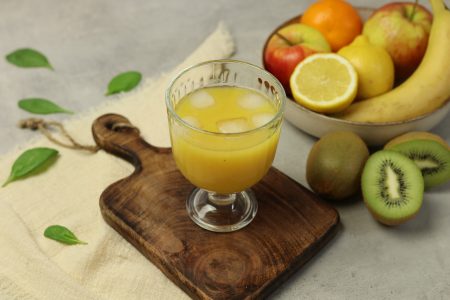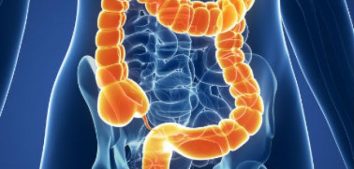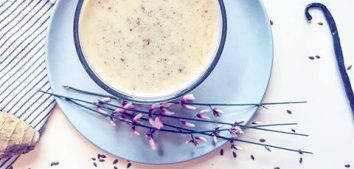
Antihistamine Diet – What Is It?
Some of you may have heard the concept of antihistamine diet. If you are wondering whether this is just another ‘miracle diet’, let me explain!
Let’s start with the basic concepts. What exactly is histamine?
Histamine is a biogenic amine, i.e. an organic chemical compound naturally occurring in the human body. It performs a number of different functions, including:
- it is responsible for regulating smooth muscle tension and blood pressure,
- it stimulates the secretion of gastric acid,
- it takes part in wound healing,
- it regulates the rhythm of sleep and wakefulness.
In healthy people, the level of histamine in the blood is kept at an appropriately low level thanks to enzymes that break it down. These are mainly two enzymes: diaamine oxidase (DAO) and histamine N-methyltransferase (HNMT).
Histamine Intolerance
Histamine intolerance is defined as an undesirable reaction that occurs after consuming products with a high histamine content. It occurs when the body does not maintain the balance between histamine released from food and the body’s ability to metabolize it. There is a reduced activity of the previously mentioned DAO enzyme, which causes the concentration of histamine in the plasma to increase.
It is accompanied by symptoms such as:
- headaches and dizziness,
- skin redness (especially face),
- itching,
- breathing problems,
- palpitations,
- stomachache,
- diarrhea,
- constipation,
- nausea.
How to Recognize Histamine Intolerance?
It is believed that the main reason for histamine intolerance is the reduced activity of the DAO enzyme, which, as I mentioned earlier, is responsible for the breakdown of histamine supplied with food. Disturbances in the composition of the intestinal microbiota (e.g. SIBO), the use of medications or alcohol consumption may also contribute to the occurrence of histamine intolerance.
Diagnosing histamine intolerance is not easy because it produces non-specific symptoms. If the above-mentioned symptoms occur, other diseases such as food allergies or inflammatory bowel diseases should first be ruled out.
In order to make the correct diagnosis, it is often suggested to measure the activity of the DAO enzyme and the level of histamine in the blood. However, some studies emphasize the significant diagnostic limitations of these parameters. In one study, each participant’s DAO level was tested three times. It was noticed that after taking the measurements three times, only 11 out of 31 people would receive the same diagnosis. This means that most participants would at one time be considered healthy and then considered histamine intolerant in the next study.
Testing DAO enzyme activity is usually not recommended at the beginning of routine food intolerance diagnosis. Only after excluding other possible causes of the symptoms, histamine intolerance can be suspected and an antihistamine diet should be used. Confirmation of the diagnosis requires the detection of at least two characteristic symptoms and their disappearance or alleviation after the use of an antihistamine diet.
Remember that any symptoms should always be consulted with a doctor who should perform appropriate diagnostics and on this basis determine possible histamine intolerance.
Antihistamine Diet – What Is It?
The antihistamine diet is used to alleviate or eliminate symptoms. It involves eating products with a low histamine content and eliminating those with a high content.
Foods rich in histamine include:
- semi-hard and hard mature cheeses (e.g. camembert, feta, gouda, parmesan),
- mature and raw meats (e.g. prosciutto, salami),
- fatty fish (e.g. salmon, mackerel, sardines), dark meat fish (e.g. mackerel, tuna),
- smoked meat and fish,
- canned meat and fish,
- lacto-fermented products (e.g. cabbage, cucumbers),
- fermented products (e.g. kefir, kombucha),
- some vegetables (e.g. tomato, spinach, eggplant) and fruits (citrus fruits, strawberries),
- alcohol.
In the antihistamine diet, it is recommended to exclude highly processed products, containing preservatives and artificial dyes, as well as smoked, aged, and lacto-fermented products. It is very important that foods, especially vegetables and fruits, are fresh because the histamine content in foods may continue to increase during storage. It is also recommended to cook in water and steam, which will further reduce the amount of histamine.
Summary
Remember that the antihistamine diet is an elimination diet and should not be used as a weight loss diet or to improve health and well-being in people who do not have histamine intolerance. If it is necessary to follow this diet, it should be implemented under the supervision of a doctor and a dietitian. Doing it on your own may result in vitamin and mineral deficiencies in the body, so always contact a specialist first.
Bibliography:
- Comas-Basté O, Sánchez-Pérez S, Veciana-Nogués MT, Latorre-Moratalla M, Vidal-Carou MDC. Histamine Intolerance: The Current State of the Art. Biomolecules. 2020 Aug 14;10(8):1181.
- Hrubisko M, Danis R, Huorka M, Wawruch M. Histamine Intolerance-The More We Know the Less We Know. A Review. Nutrients. 2021 Jun 29;13(7):2228.
- Schnedl W.J., Lackner S., Enko D., Schenk M., Holasek S.J., Mangge H. Evaluation of Symptoms and Symptom Combinations in Histamine Intolerance. Intest. Res. 2019;17:427–433.
- Schnoor, H.S., Mosbech, H., Skov, P.S. et al. Diamine oxidase determination in serum. Allergo J 22, 108–111 (2013).










Comments No Comments
Join the discussion…